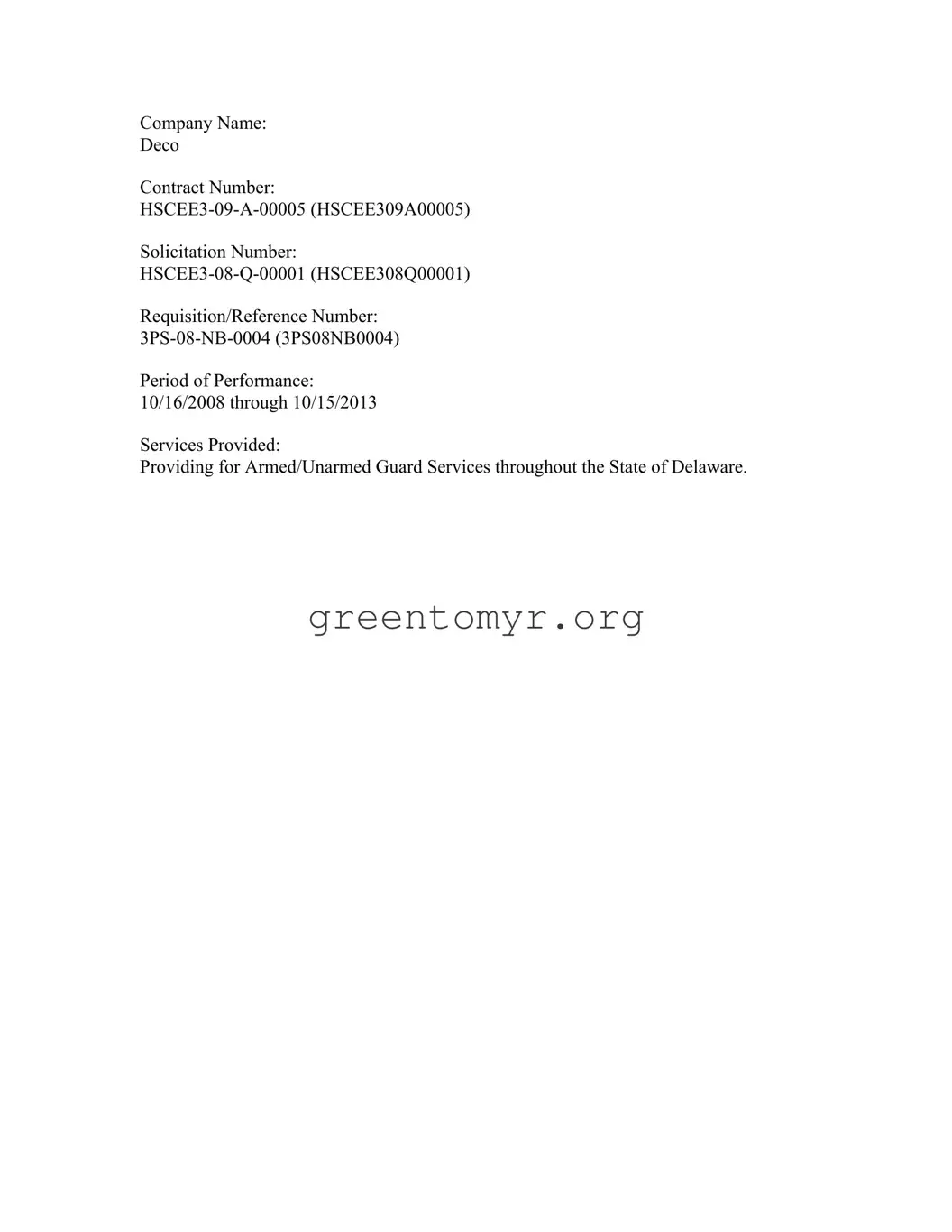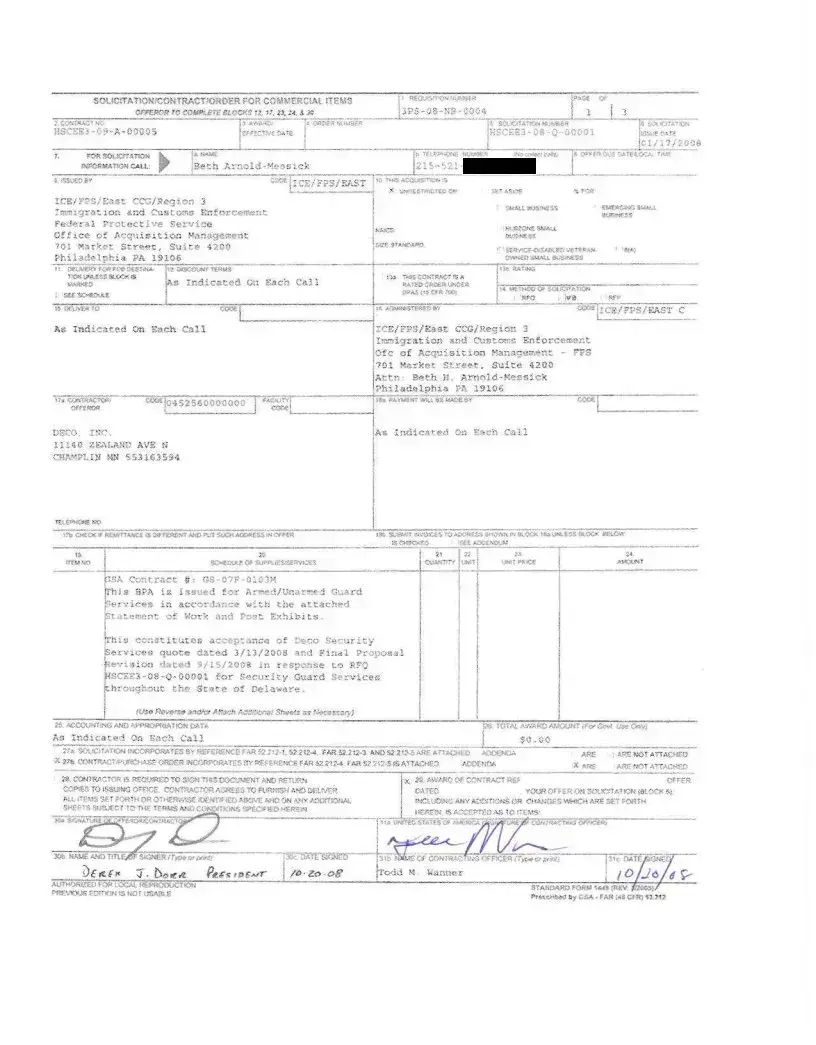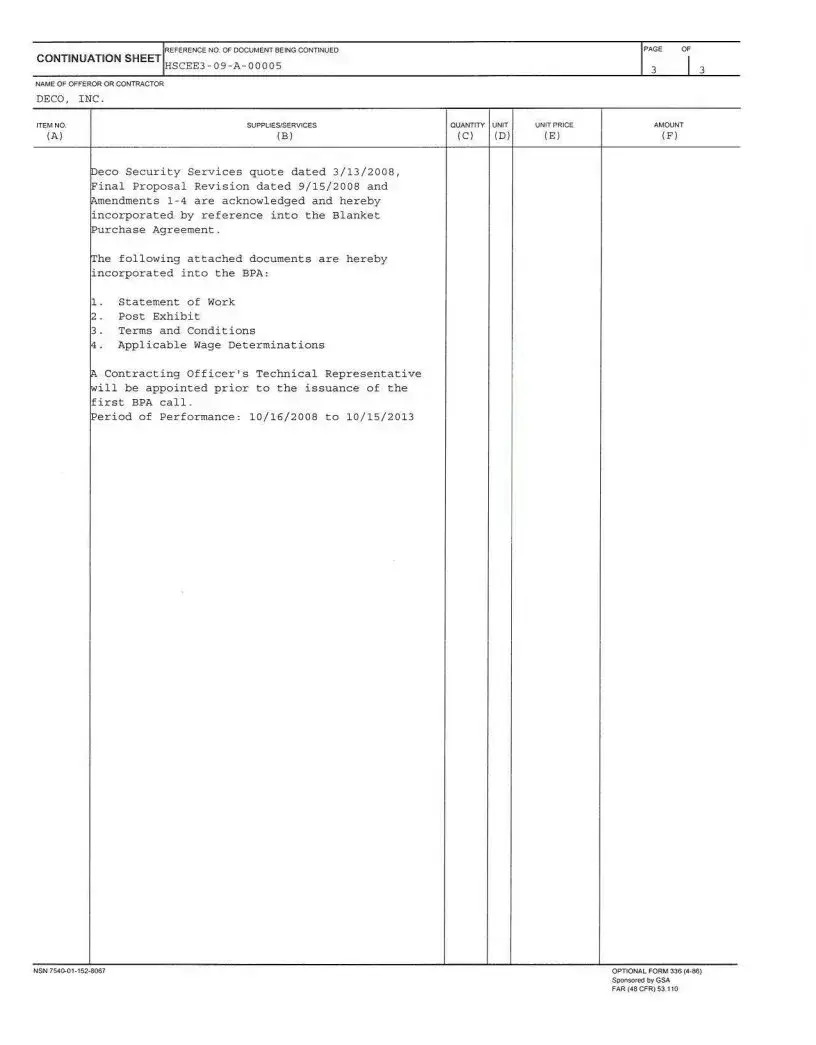Created on 12/20/2007 12:01:00 PM |
RFQ HSCEE3-08-Q-0001- Delaware Term BPA |
Last modified 12/19/07 JM |
|
7Key Personnel
7.1Contract Manager
7.2Supervisor
8Work Scheduling Procedures
9BPA Guard Labor Category
10.1BPA effort Required – Productive Hours
10.2BPA Effort Required – Supervisory Hours
10.3BPA Effort Required – Reserve Security Guard Force
11 Training
11.1General
11.2Training requirements by Position
11.2.1Security Guards
11.2.2Supervisors
11.3Written Examination
11.4Weapons Training and Qualifications
11.4-1 Annual Firearms Re-Qualification
11.5Minimum Age for Firearms Licensing
11.6FPS Specific Training
11.7Government Provided Magnetometer / X-ray Training
11.8CPR / AED / First Aid Training
11.9Other Special Training
11.10Training of Replacement Employees
11.11Schedule of Provided Training and Testing
11.12Government Provided Training – Failure to Attend
11.13Training Waivers
12 |
Medical and Physical Qualifications |
12.1General
12.2Medical Standards
12.3Physical Demands
12.4Initial and Recurring Screening for Illegal Drugs
12.5Government Requested Screening
13Conduct of Vendor Personnel
14Contract Employee Reinstatements
15Government and Vendor Provided Property
15.1Government Furnished Property General Information
15.1-1 Use of Government Property




